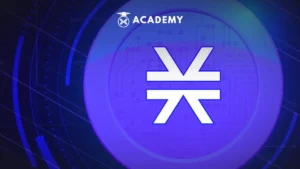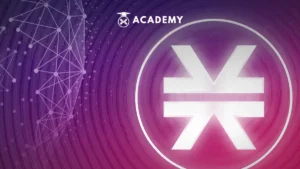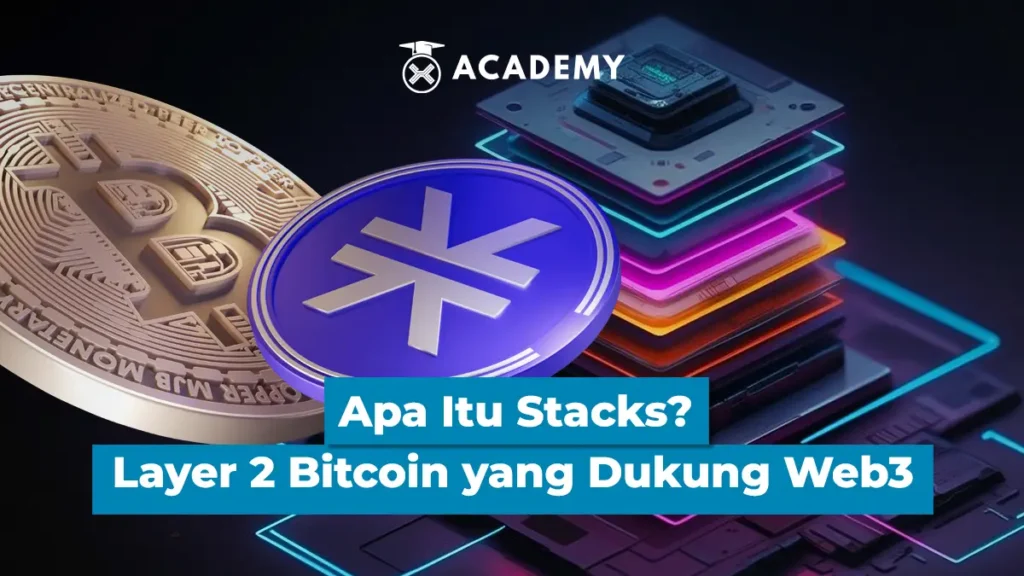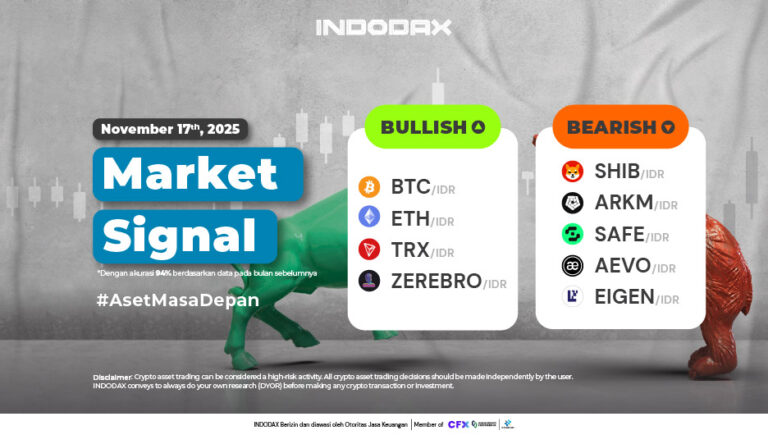In the crypto world, Bitcoin has long been known as the most secure digital asset and has a strong decentralized nature.
However, have you ever imagined if Bitcoin could also be used to run smart contracts as Ethereum does? Well, that’s where the presence of Stacks (STX) becomes very interesting.
As a Layer 2 solution on top of the Bitcoin network, Stacks enables the development of decentralized applications (dApps) while maintaining the security advantages of the Bitcoin blockchain.
Let’s find out more about what Stacks is and why this project plays an important role in shaping the future of the Bitcoin ecosystem!
What is Stacks (STX)?

Essentially, Stacks is a Layer 2 blockchain built to extend the functionality of Bitcoin.
Through a consensus mechanism called Proof of Transfer (PoX), Stacks is directly connected to the Bitcoin network, allowing for a secure and decentralized integration of the two blockchains.
STX is the native token of the Stacks network, used to pay transaction fees, run smart contracts, and as an incentive for ecosystem participants.
The main goal of Stacks is to bring smart contract and dApp development capabilities to the Bitcoin network without having to change the underlying Bitcoin protocol.
This allows BTC, which was previously passive, to be used more productively. Stacks has its own infrastructure, including a separate ledger called Gaia to store data outside of the Bitcoin blockchain.
This gives developers the flexibility to build applications like they would on Ethereum or Solana, but with the security of Bitcoin as their foundation.
Another interesting article for you: Proof of Burn (PoB): A Unique Mechanism for Burning Crypto Coins
How Stacks Works as a Bitcoin Layer 2
Stacks uses a Proof of Transfer (PoX) consensus mechanism, which connects the Stacks network directly to Bitcoin.
Unlike Proof of Burn (PoB) which destroys crypto assets, PoX allows STX miners to transfer BTC as proof of work to compete to mint new blocks.
Successful miners are rewarded with STX tokens. This process also allows STX holders, called stackers, to receive BTC rewards if they lock up their tokens through the stacking process.
PoX works on a 1:1 block ratio with Bitcoin. Every activity on Stacks is recorded and verified through the Bitcoin blockchain so that Bitcoin’s security is inherited by Stacks without changing Bitcoin’s original features.
In the process, PoX uses Bitcoin blocks as anchors to record Stacks’ block hashes. This information is stored in the OP_RETURN field of every BTC transaction, making Stacks’ history permanently recorded on the Bitcoin blockchain.
Therefore, anyone who wants to change Stacks’ records would have to manipulate data on the Bitcoin network itself, which is nearly impossible, making this integration extremely secure and censorship-resistant.
Furthermore, Stacks also features Clarity, a smart contract programming language designed to be transparent, predictable, and human-readable.
Clarity allows developers to build dApps on top of Bitcoin in a safe and modular way, without the hidden risks that often come with other languages ??like Solidity.
Because Clarity’s code is understandable before it is executed, developers can be clear about how the smart contract will function.
Key Features of Stacks
As a Layer 2 solution built on top of the Bitcoin network, Stacks brings a variety of innovative features that extend Bitcoin’s capabilities without changing its underlying protocol.
With a unique approach, Stacks opens up opportunities to develop Web3 applications, smart contracts, and NFTs in the Bitcoin ecosystem. Here are some of the key features that are Stacks’ strengths:
1. Decentralization through PoX
Stacks adopts the Proof of Transfer (PoX) system as a unique consensus mechanism, allowing the block validation process to be carried out decentralized without requiring large amounts of energy like in Proof of Work.
In this system, miners transfer Bitcoin to get the chance to mine Stacks blocks, while STX token owners who participate in crypto staking will receive BTC rewards.
This creates an open and secure participatory network that supports true decentralization.
2. Bitcoin-Based Smart Contracts
Using the Clarity programming language, Stacks allows developers to create smart contracts that run parallel to the Bitcoin network without modifying the Bitcoin protocol itself.
Clarity is designed to be transparent and predictable, making Stacks an ideal solution for building secure and trustworthy decentralized applications (dApps) on the Bitcoin ecosystem.
3. Security from the BTC Chain
All activity on the Stacks blockchain is tied directly to the Bitcoin blockchain. Through the integration of PoX and the recording of hashes in Bitcoin’s OP_RETURN, Stacks automatically inherits the highest level of security from the Bitcoin network.
This means that anyone who wants to change data on the Stacks network must first master and change the Bitcoin blockchain, which is a process that is technically and economically impossible.
4. Compatibility with Web3 and NFTs
Stacks extends Bitcoin’s functionality into the Web3 realm, including support for NFTs and DeFi applications.
By leveraging Clarity and its layer 2 architecture, developers can create NFTs, financial protocols, and digital identities that run entirely on top of the Bitcoin ecosystem.
This makes Stacks a bridge between the reliability of Bitcoin and the innovation of modern blockchain technology.
Also read related articles: Differences Between Layer 1 Blockchain, 2 Vs 3 & Their Advantages
Stacks vs. Other Blockchains (Ethereum, Solana)
In the blockchain world, Ethereum and Solana are known as very fast and friendly networks for the development of decentralized applications (dApps).
However, both sacrifice some aspects of decentralization and stability in favor of speed and scalability.
That’s where Stacks’ position is unique because it is present as a bridge between technological innovation and the stability of the Bitcoin network. Here are some comparisons between Stacks and blockchains like Ethereum and Solana:
1. Speed
Solana is known for its high throughput, capable of processing thousands of transactions per second (TPS). Ethereum has a moderate speed, but its scalability continues to be improved through Ethereum 2.0 and Layer 2.
Meanwhile, Stacks is not as fast as Solana, but each Stacks block is processed in line with Bitcoin blocks (about every 10 minutes), making it suitable for applications that prioritize security over speed.
2. Security
Stacks inherits Bitcoin’s security strength thanks to its Proof of Transfer (PoX) mechanism, making it one of the most secure Layer 2 networks.
Ethereum and Solana have their own security mechanisms, but they are not as robust as Bitcoin in terms of long-term stability.
3. Scalability
Ethereum and Solana excel in terms of scalability, but that comes with a greater risk of centralization. Stacks may be slower, but it maintains decentralization and doesn’t sacrifice the stability of the underlying Bitcoin network.
At its core, Stacks isn’t just an add-on blockchain. It leverages the power of Bitcoin as a foundation while bringing smart contracts, NFTs, and Web3 applications to an ecosystem that was previously known only as a store of value.
That’s what makes Stacks a strategic bridge between emerging technologies and proven foundations.
Projects and Ecosystems on Stacks
Stacks was designed to extend the capabilities of Bitcoin by bringing smart contracts, NFTs, and decentralized applications (dApps) directly into its ecosystem.
With that vision, a variety of innovative projects have grown on top of the Stacks protocol, forming a vibrant Web3 ecosystem.
One of the most popular applications is Hiro Wallet, an official wallet that allows users to manage STX, access dApps, and participate in stacking directly.
Then there’s CityCoins, a project that allows city communities like Miami and New York to create crypto tokens to support local initiatives through the Stacks protocol.
Stacks itself continues to attract the attention of Web3 developers with its infrastructure that makes it easy to integrate smart contracts into Bitcoin.
The ecosystem includes DeFi projects like ALEX, a decentralized exchange (DEX) similar to Uniswap, and Arkadiko, a lending and stablecoin platform that functions similarly to MakerDAO.
There’s also StacksSwap, Zest Protocol, LNSwap, and Liquidium, a DeFi platform that offers NFT-backed lending services.
All of this proves that Stacks is not only extending Bitcoin’s functionality, but also creating a friendly environment for decentralized finance experiments.
In the NFT world, the Gamma project has become the largest NFT marketplace in the Stacks ecosystem, and has even begun exploring integration with the Ordinals NFT collection. In the future, users will be able to trade Ordinals directly through this platform.
There is also Trade Port, an NFT aggregator that connects several cross-blockchain marketplaces including Stacks, NEAR, and Aptos.
Meanwhile, Hey Layer is present as an NFT marketplace that focuses on digital artwork, similar to the concept of SuperRare.
Stacks Risks and Challenges

While Stacks offers a unique approach to bringing Web3 functionality to Bitcoin, the ecosystem still faces a number of challenges that need to be anticipated as the technology evolves, including the following:
1. Dependence on Bitcoin
As a Layer 2 that relies heavily on the security and finality of the Bitcoin blockchain, Stacks cannot be completely free from the dynamics and limitations of the Bitcoin protocol itself.
Any congestion, policy changes, or delays in the Bitcoin ecosystem can have a direct impact on the performance and efficiency of the Stacks network, especially since the PoX consensus process is closely tied to Bitcoin mining activity.
2. Adoption Scale
Stacks is still in the development and adoption phase. Although it offers a smart contract solution for Bitcoin, mass adoption by end users and developers is not yet on par with large ecosystems such as Ethereum or Solana.
These challenges include a lack of market education, the need for more mature developer tools, and competition for the attention and trust of the global crypto community.
3. Competition with Other Layer 2s
Stacks is not alone in offering scalability solutions and additional functionality on top of the main blockchain.
Other Layer 2s such as Arbitrum, Optimism (for Ethereum), and off-chain solutions such as the Lightning Network on Bitcoin are also competing to become the leading solution.
To compete, Stacks needs to continue to deliver innovations that are relevant, efficient, and easily accessible to developers and ordinary users.
Another interesting article for you: What is Ethereum Layer 2? Take a Peek at 7 Potential Projects
The Future of Stacks and Future Roadmap
Stacks continues to move forward with a long-term vision to expand Bitcoin’s utility through an ecosystem of decentralized applications (dApps), without sacrificing the core security of the Bitcoin network itself.
By relying on the Proof of Transfer (PoX) mechanism, Stacks has the ambition to make Bitcoin not only a store of value, but also the main foundation of the Web3 world.
1. Long-Term Vision
Stacks is focused on creating a more open and decentralized Internet by making Bitcoin the base layer of digital identity, smart contracts, and the crypto economy.
In the long term, Stacks aims to be the main bridge that allows millions of users to access DeFi, NFT, and dApps features on top of Bitcoin’s infrastructure that has been proven secure for over a decade.
2. Lightning Network Integration
One potential development that is being explored is the possibility of integration with the Lightning Network, an instant and cheap payment solution on top of Bitcoin.
If successful, the integration could open up opportunities for micro and real-time transactions within the Stacks ecosystem, expanding Stacks’ use cases in the fields of payments, gaming, and the digital economy.
3. Global Community Support
Stacks’ growth is also driven by an active and enthusiastic global community, including developers, Web3 entrepreneurs, and users who participate through stacking.
This community not only helps distribute BTC rewards through the PoX mechanism, but also encourages innovation through hackathons, project incubators, and grants for the development of new applications.
Conclusion
So, that was an interesting discussion about What is Stacks (STX)? Bitcoin Layer 2 That Makes Smart Contracts Faster which you can read in full at the Crypto Academy at INDODAX Academy.
In conclusion, Stacks is not just an ordinary Layer 2 project, but an innovation that connects the power of smart contracts with the Bitcoin network.
Thus, Stacks offers great potential to bring a secure and transparent Web3 ecosystem, leveraging Bitcoin’s proven stability and security for over a decade.
Through the integration of DeFi, NFTs, and decentralized applications (dApps), Stacks opens up new opportunities for developers and users to innovate without sacrificing the basic principles of Bitcoin security.
If you are looking for a platform that combines the power of Bitcoin with the flexibility of DeFi and the potential of Web3, then Stacks is worth considering for exploration and investment strategy.
And for an easy and safe trading experience, download the best crypto application from INDODAX on the App Store or Google Play Store. You can also start buying Bitcoin, buying Ethereum, and other crypto assets practically in your grasp at INDODAX Market. Also follow INDODAX social media here: Instagram, X, Youtube & Telegram
FAQ:
1.What is Layer 2 Stacks?
Stacks is a Layer 2 blockchain for Bitcoin that allows smart contracts and Web3 applications to run with the security of the Bitcoin network.
2.What is the difference between Stacking and Staking in Stacks?
Stacking is the process of locking STX to get rewards in the form of Bitcoin, while staking is generally used in PoS blockchains for validation.
3.Can STX tokens be used on the Bitcoin network?
Not directly. STX runs on the Stacks network but is closely related to Bitcoin through Proof of Transfer (PoX).
4.Is Stacks safe to use?
Yes, because its security comes from the Bitcoin blockchain as the main layer, and its smart contracts are written in the transparent Clarity language.
5.Is Stacks suitable for long-term investment?
Stacks has great potential, especially with the trend of Web3 integration into Bitcoin. However, always do your research before investing.
Author: BOY





 Polkadot 8.81%
Polkadot 8.81%
 BNB 0.43%
BNB 0.43%
 Solana 4.77%
Solana 4.77%
 Ethereum 2.37%
Ethereum 2.37%
 Cardano 1.75%
Cardano 1.75%
 Polygon Ecosystem Token 2.11%
Polygon Ecosystem Token 2.11%
 Tron 2.85%
Tron 2.85%
 Market
Market


